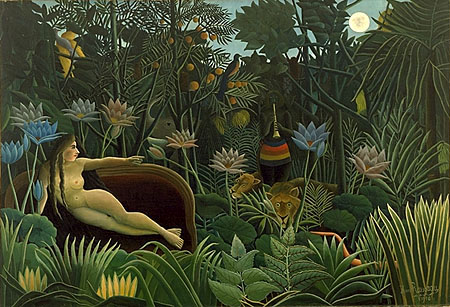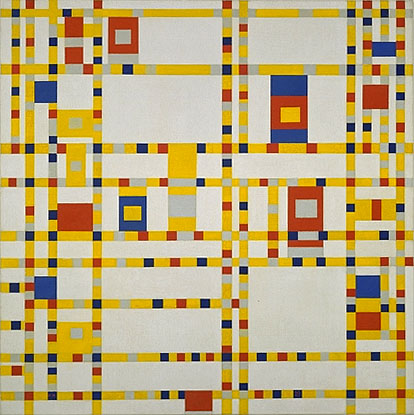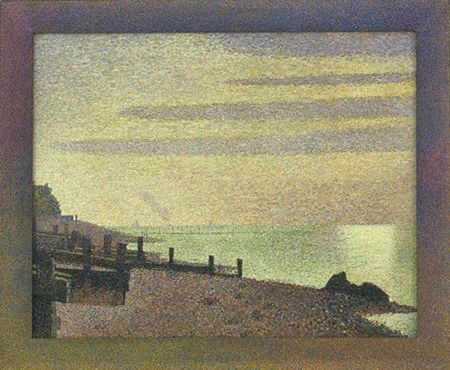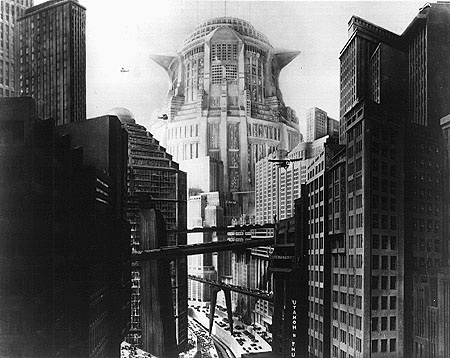
 |
This is the wonderful Van Gogh painting, "The Starry Night". Its not to be confused with his lesser work "Starry Night". Or Don McLean's imaginary "Starry, Starry, Night". It was painted in 1889. |
| This is the equally wonderful Van Gogh painting, "The Olive Trees". It was painted in 1889 also. A while ago some bilionaire asked MOMA to auction these two paintings. His opening bid of one hundred million dollars was guaranteed by Citicorp. Thankfully MOMA declined. |
 |
 |
Here is Pablo Picasso's "Les Demoiselles d'Avignon" painted in 1907. His development towards cubism reached its climax in this monumental, justly celebrated work. It depicts, in highly stylized form, five women from a brothel on Avingnon street in Barcelona, Spain. Not too clear what that means. I just copied it from an encyclopedia! |
 |
Gaughin's "Moon and Earth". In 1888, Gauguin and Émile Bernard proposed a synthetist theory of art, emphasizing the use of flat planes and bright, nonnaturalistic color in conjunction with symbolic or primitive subjects. The Yellow Christ (Albright-Knox Art Gall., Buffalo) is characteristic of this period. In 1891, Gauguin sold 30 canvases and with the proceeds went to Tahiti. There he spent two years living poorly, painting some of his finest pictures, and writing Noa Noa (tr. 1947), an autobiographical novel set in Tahiti. |
| This is the 1910 work of Henri Rousseau entitled simply "The Dream". His jungles are an organized
profusion of carefully defined yet fantastic plants,
half-concealing various wild animals with staring eyes.
These scenes are rendered in a vivid, almost hypnotic
folk style. The finest ones include The Snake Charmer
(1907) and The Dream. I wouldn't be surprised if the lion, staring at the observer, was the inspiration for George Rodrigue's Blue Dog paintings. |
 |
 |
Here's Paul Cezannes 1885 work , "The Bather". Cézanne sought to recreate nature by simplifying forms to their basic geometric equivalents, utilizing color and considerable distortion to express the essence of landscape and figural groupings. Cézanne developed a new type of spatial pattern. Instead of adhering to the traditional focalized system of perspective, he portrayed objects from shifting viewpoints. He created vibrating surface effects from the play of flat planes against one another and from the subtle transitions of tone and color. In all his work he revealed a reverence for the integrity and dignity of simple forms by rendering them with an almost classical structural stability. |
| Piet Mondrians "Broadway Boogie-Woogie", 1942. Typical of his art are compositions employing only vertical and horizontal lines at 90 deg angles and using only the primary colors and sometimes grays or black against a white background. Sensuality, three-dimensionality, and representation are utterly eliminated from his works, as is the curved line. Within these restrictions, his paintings are executed with consummate perfection of design and craft. |
 |
| Georges-Pierre Seurat's "Evening, Honfleur". Which was painted in 1886. He is the ultimate example of the artist as scientist. He spent his life studying color theories and the effects of different linear structures. He will be remembered for his technique called pointillism which uses small dots or strokes of contrasting color to create subtle changes in form. |
 |
 |
Umberto Boccioni's "Unique Forms of Continuity in Space". 1913. He played a primary role in the drafting of the manifesto of futurism in 1910 and was the major figure in the movement until 1914. Influenced by Medardo Rosso, this statue embodies his concept of "lines of force to replace the use of straight lines". |
 |
MOMA also has a great collection of silent films. Most people are unaware that before Hollywood became the center of the movie industry, Berlin, Germany was the center of silent filmdom. This is from Fritz Lange's "Metropolis", 1926, a "Utopian" film that predicts a dim future for man. |
| This is from Robert Wiene's film "The Cabinet of Doctor Caligari", 1920. Many critics consider this the first horror film, appearing eleven years before "Dracula". Both this and "Metropolis" were filmed in Berlin. It wasn't the politics alone that doomed Berlin, but the American invention of Talkies. |
 |